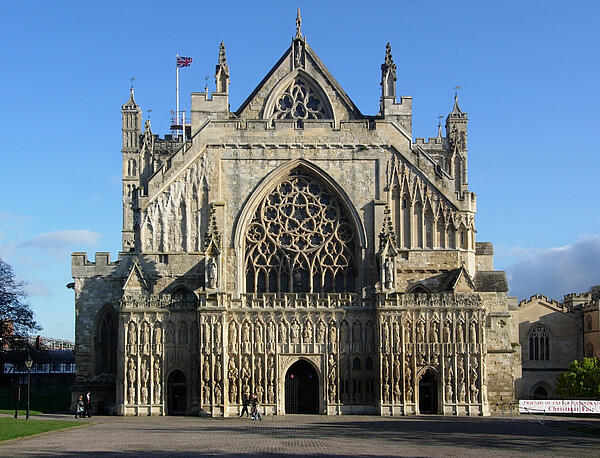Building a Medieval Cathedral
Cathedrals ruled the landscapes in Medieval England and were built to be even larger than castles to represent how significant region was within medieval society, for the poor and wealthy alike.
Building large medieval cathedrals was the favoured way for the church to display its wealth and power, with cities such as Canterbury and York becoming sites of great importance and significance as a result of great cathedrals being built within their walls.

It cost huge amounts to build such great cathedrals and the money was raised through donations made to the Roman Catholic Church. However, no amount of money could significantly affect the standard of tools available and workers were expected to use very basic tools while working in unacceptable conditions in order to complete each project. Despite this, working on the cathedrals and helping display God’s glory was was considered to be a great honour.
An architect would be required to design the cathedral, and they would also be required to decide which master craftsmen and other skilled men were the best to hire for the task. Frequently found on a cathedral construction site were:
| A master quarryman | A master stone cutter |
| A master sculptor | A master mortar maker |
| A master mason | A master carpenter |
| A master blacksmith | A master roofer |
| A master glass maker |
The masters of each trade would run their own workshops and employ several masons, who were entrusted to produce high quality work. This masons would eventually go on to become master masons themselves, likely working on equally impressive projects in the future. These men were highly skilled and so would not be required to perform any labouring work. Instead, local unskilled labourers would be hired for these tasks.
Many of the trades would work together to ensure the job was completed as well as possible - master blacksmiths would construct metal tools, for example, while carpenters would create wooden handles for them. However, the number of tools required was very small, and included only basic items such as hammers, chisels, saws and pickaxes. Other commonly used tools included:
See also: Medieval Cathedrals
| Pickaxe and axe | Brace and Bit |
| Hammer | Sledge hammer |
| Chisel | Auger |
| Saw | Mathematical dividers |
| Plane | Squares and templates |
A chapter was available on site to decide how much money would be invested in each area, and would also be responsible for deciding on the final design for the cathedral. Once this plan was put in place, the basic building work would begin.
Recent renovation work that has taken place in Canterbury Cathedral revealed that it was actually built on tip of the original cathedral - so it actually became part of the foundations. This was not unusual as foundations could be 25 feet deep. Creating the foundations could be a skill in itself, with any mistakes causing the walls above to become weak and ultimately collapse.
During the time when the foundations were being laid, craftsmen would be sent to work in quarries where they would produced stone blocks. Up to 50 skilled apprentices could work in the quarry alongside 250 labourers, and all under the supervision of the master quarryman. This master would be provided with templates for the shapes of block required by the master mason, so individual stones could be marked to plan where they would be placed in the building.
See also: Canterbury Cathedral
MLA Citation/Reference
"Building a Medieval Cathedral". HistoryLearning.com. 2026. Web.
